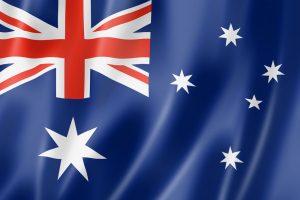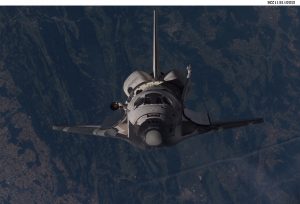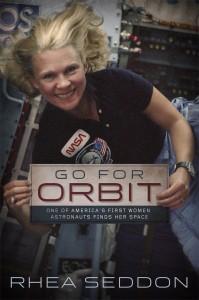Astronaut-in-Residence
Imagine looking out at a sea of bright young faces in a faraway land, a place called Australia.
In 1994 I had been invited to be the Astronaut-in-Residence at Melbourne’s St. Catherine’s School. In a huge auditorium, I faced several hundred girls from tiny four year olds to blossoming teens. Then, they began to sing. After a lengthy plane ride to this “Land Down Under,” a song rang out and linked me to home. Their glorious rendition of “The Battle Hymn of the Republic” reached a crescendo, and my visit began in grand style.
In the 1990s, the wise leaders at the school observed that science and math were becoming increasingly important in education. They realized that for years they’d had a wonderful Artist-in-Residence program, but the world was changing—especially for young women. They had invited me to build a week’s curriculum based upon my career and background in science, incorporating things I had learned from flying in space.
What a challenge!
Because it was my field of expertise, teaching biology classes about how the body adapts to weightlessness was easy. Colorful pictures from space enthralled the geology students who saw how the Earth looked from a very different perspective. Their country’s Great Barrier Reef looked like an impenetrable obstacle for early explorers. Physical education classes found it interesting to plan a weightless exercise plan for astronauts. Geography, physics, biology, astronomy—they all demonstrated exciting science fields for future exploration. Unafraid, the youngest girls asked basic questions about living in space: eating, sleeping, floating, staying clean, and using the bathroom.
They all wanted to go up there, into orbit.
I was reminded once again of my responsibility as a role model. Thinking ahead to their own futures, the girls wanted to know how I traveled the long path to my interesting career and happy life. They were able to meet in-person the kind of woman some hoped to be one day. It is often said, “If you can see it, you can be it.”
Enough can’t be said about the importance of the educators in schools like this one…and in all schools. In addition to the coursework, teachers serve as examples of reliable, intelligent adults. They help their charges develop strong self-worth, enabling them to be confident leaders and contributing members of their communities.
Being sent by the Astronaut Office to places like this land of kangaroos and koalas was a perquisite of my job with NASA. These girls will all be grown women now. I hope they have used their fine education to do wonderful things. And when they look at the stars they’ll remember the astronaut who had the honor of showing them what life in space was like.
-Rhea
We’d love to add you to our email list. If you have not yet signed up, please do so by clicking here. Thank you!






Wonderful Rhea. I remember the Melbourne newspaper article heralding your stay at the school and thinking, you lucky girls. The ripple of example goes further than we think.
I remember meeting and interviewing at the press conference…
What a great opportunity for you to inspire a group of young ladies in Australia. I taught for 37 1/2 years and hope that I made an impact every day.
What another great essay/blog Dr. Seddon